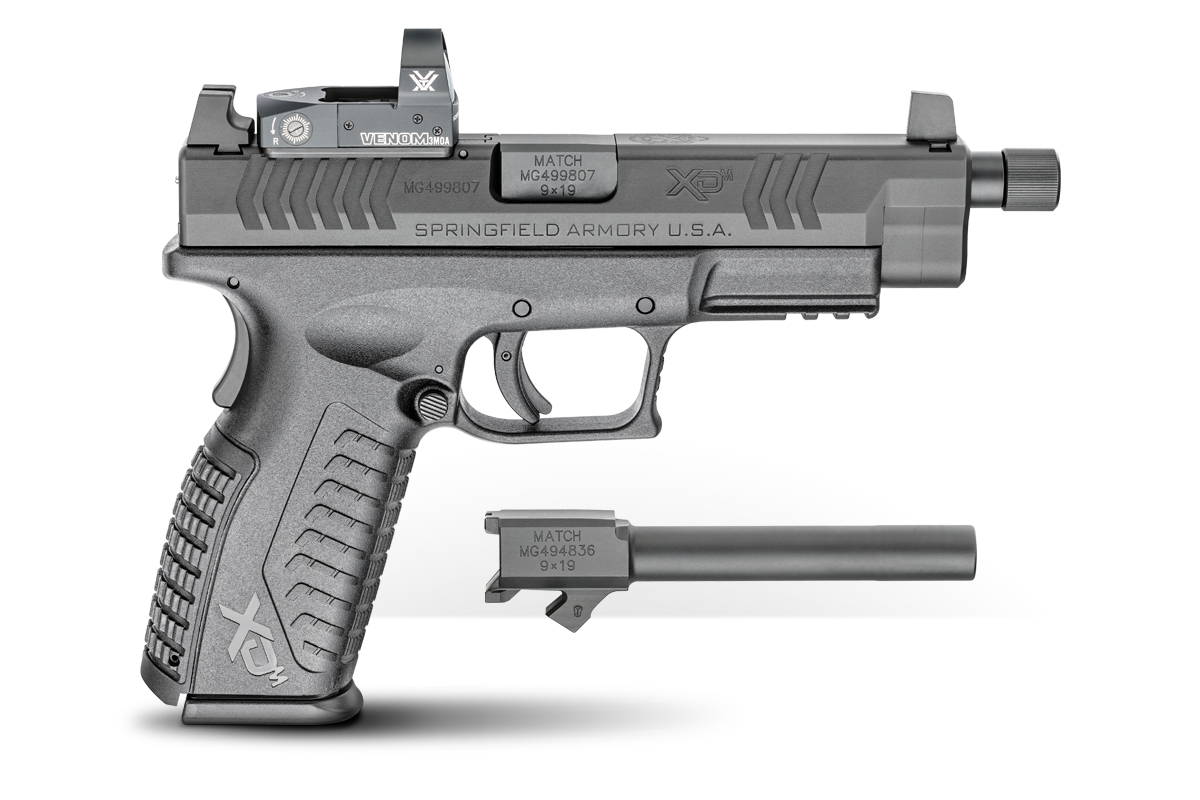The Sound of Silencers
November 8th, 2019
5 minute read
Think that fancy new suppressor you bought will “silence” your gun? Think again. There’s more to it than just that. But let’s start at the beginning. There are two components to gunshot noise: muzzle blast and sonic booms.
We usually think of muzzle blast as some kind of noise associated with exploding (or technically speaking, fast burning) powder, but it’s not. The noise we associate with muzzle blast is a result of pressure differential. A larger volume of high-pressure gas exits the muzzle all at once and escapes into the surrounding low-pressure air. That creates what we perceive as noise. That’s why airguns, that have no burning or exploding propellants, make noise when you shoot them. That’s also why so many of them come with moderators (suppressors) pre-installed.
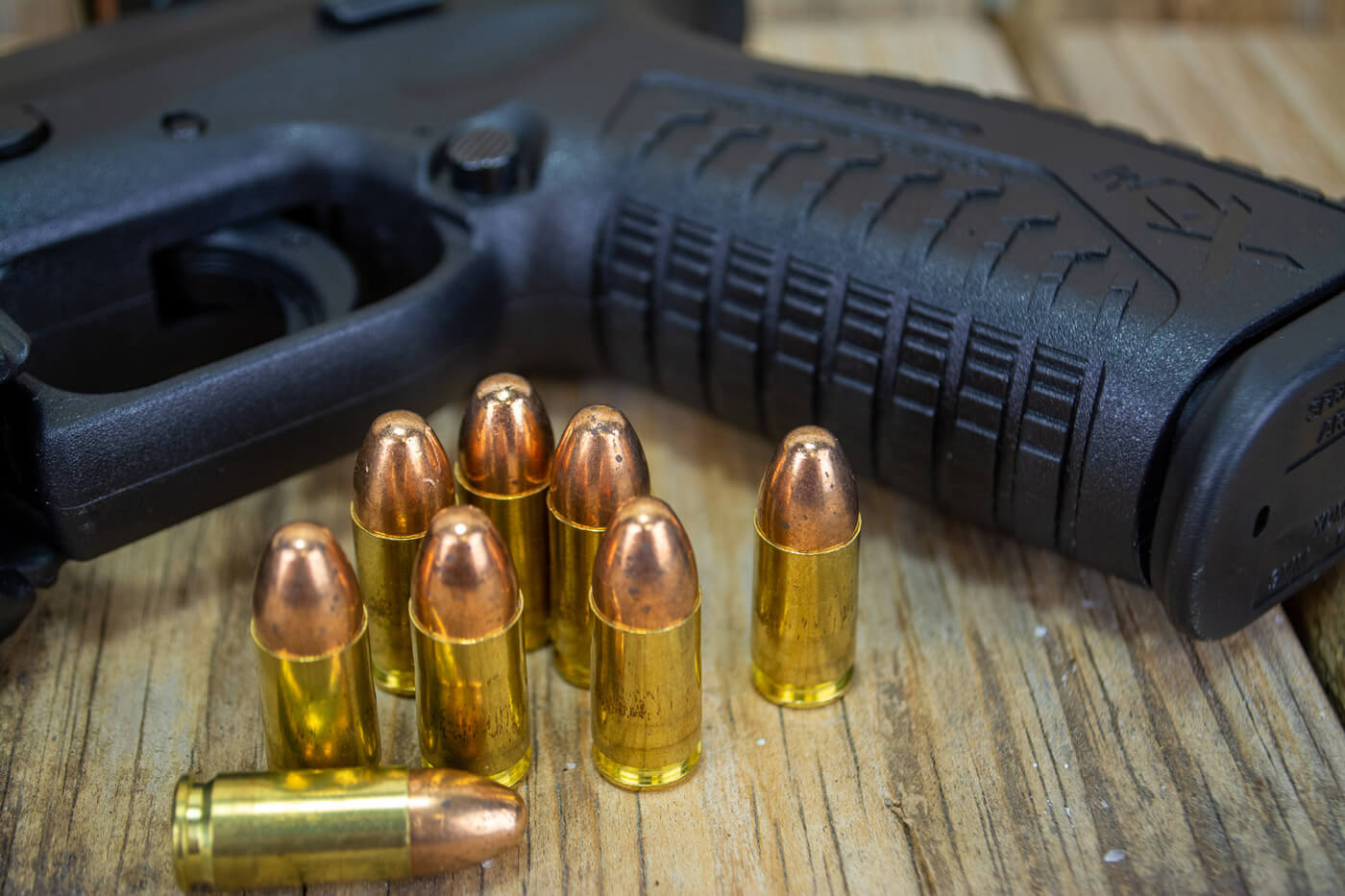
Pop That Balloon?
But back to the point. The easiest way to understand muzzle blast noise is to think of a balloon popping. Again, there’s nothing burning or exploding, but when you stick a pin in one, it makes enough noise to give the cat seizures. That’s because the higher-pressure air inside the balloon is being released all at once into the lower pressure surrounding environment. Sound familiar? Now think about a balloon that’s only partially inflated. When you pop that, it may only annoy the cat because it’s not nearly as loud. That’s because the pressure inside is much lower, so the transition to surrounding air is much less intense. Hold that thought.
Now let’s talk about sonic booms. Huh? You mean like jets and space shuttles? Exactly, but on a smaller scale. If a rocket with the same shape as a .308 boattail bullet flew by your house at just one mile per hour above the speed of sound, the noise pressure would rattle the windows and maybe knock your commemorative spoon collection off the wall. The exact same thing happens with bullets when they are zipping by at supersonic speeds, although given the smaller size, it’s more of a “crack” than a boom. But the effect is the same. As the bullet travels, it carries along its own baby sonic boomlet. And that generates more noise we can hear.
So, when you shoot, both muzzle blast from pressure and supersonic cracks may generate noise.
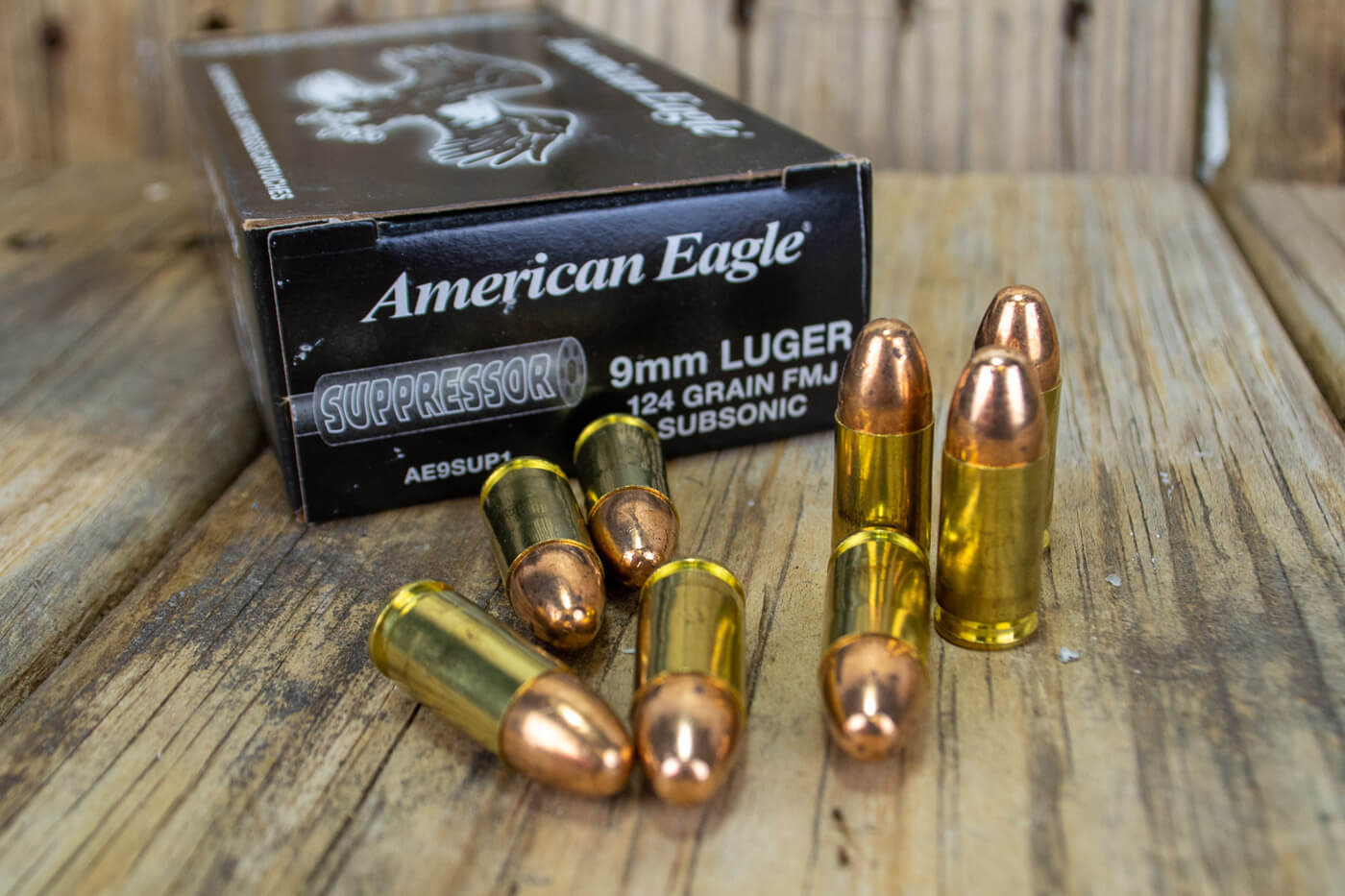
What’s Speed of Sound?
The speed of sound varies depending mostly on the ambient temperature. At 70 degrees, the speed of sound is about 1,125 feet per second. You’ll also hear that speed of sound varies with altitude, but that’s more a function of temperature change. For example, at 30,000 feet, where the airliners play, the speed of sound will be less at about 1,015 feet per second because it’s something like 30 degrees below zero up there. Where I shoot, the speed of sound is about 1,133 feet per second.
Regular Ammo
You’ll notice that for most of us in the 50 to 90-degree temperature range, pistol shots range from below the speed of sound (subsonic) to above (supersonic) depending on the specific gun and ammo combination. For example, I’ve chronographed a Springfield Armory XD-M with a variety of ammo types. Almost all 9mm 115- and 124-gr. ammo is supersonic while the 147-grain loads are subsonic, usually in the 1,030-fps range. A Range Officer Elite 10mm I’ve been testing flings most 180- to 200-gr. projectiles at speeds just above the sound barrier. On the other hand, most .45 ACP loads are naturally subsonic. When I tested a wide variety of ammo with a Springfield Armory 1911 TRP, only the Remington Golden Saber 185-grain option exceed the speed of sound — everything else was well below the sound barrier.
While most “standard” ammo isn’t necessarily designed to be sub- or supersonic, some is subsonic by nature, and that’s largely based on caliber and bullet weight.
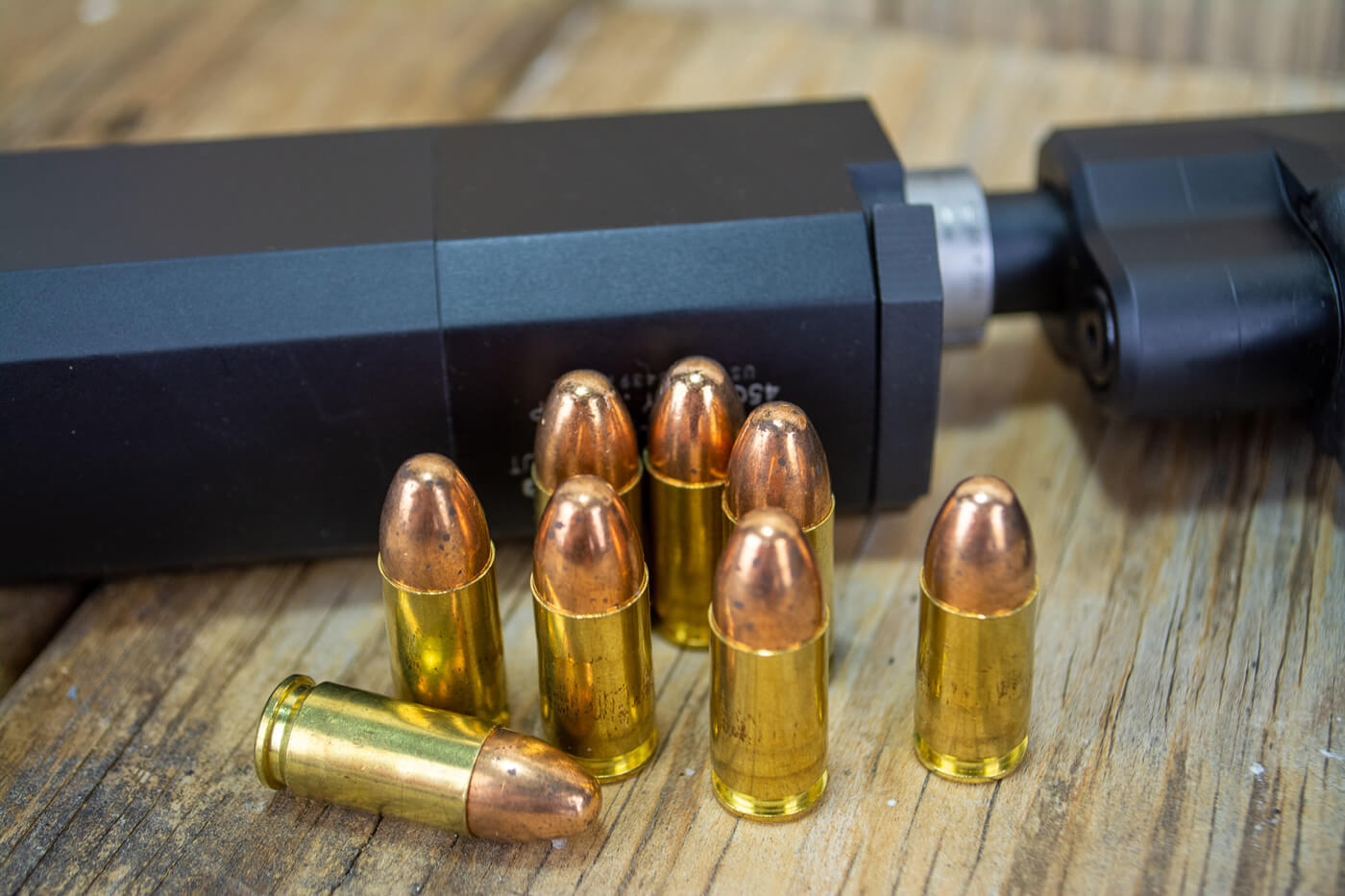
Subsonic Ammo
Some ammunition, regardless of caliber, is engineered to be subsonic. While it may be marketed as “subsonic” you might also see varieties shown as “suppressor” loads. Ammo manufacturers will concoct a load that uses the right combination of bullet weight and powder charge to produce velocities well below the sound barrier level when fired from common rifles or pistols.
For example, I tested the American Eagle 124-gr. Suppressor load in that same XD-M and recorded average velocities of 1,078.0 feet per second. You can tell that ammo manufacturers try really hard to make sure that subsonic ammo does, in fact, remain subsonic. I fired the same load through a pistol-caliber carbine with a 16″ barrel and still recorded velocities below the 1,100-fps range. That’s surprising, as with standard ammunition, that extra barrel length would have increased velocity substantially.
Often times, especially with .22 LR offerings, subsonic ammo will have heavier-than-normal bullet weights. That helps ensure a lower working velocity. For example, the American Eagle .22 LR Subsonic cartridges carry 45-gr. bullets while most other standard .22s use either 38- or 40-gr. projectiles. Fatter is always slower when the charge is the same.
The other common attribute of subsonic ammunition is a reduced powder charge that operates at lower pressure, again for the purpose of driving the bullet at slower speeds. When you combine a heavier bullet load with a lower powder charge, you’ll actually get two benefits. First, you eliminate the supersonic crack component of gunshot noise. That leaves you with muzzle blast. Remember, that the muzzle blast noise is dependent on pressure too, so a lower pressure load will run significantly quieter in the muzzle blast department too, even without a suppressor.
Adding a suppressor to subsonic ammo gets fun. While the resulting noise, or lack thereof, is nothing like the movies, the sound of pistol calibers drops from the 150-165 dB range down to 130-dB or less. A 22 pistol gets into the 115-dB range. Keep in mind that decibels are measured on a logarithmic scale, so a small increase in the number translates to a huge increase in sound level. Just a three-dB increase represents a doubling of “noise.” That 30-dB reduction is a huge deal.
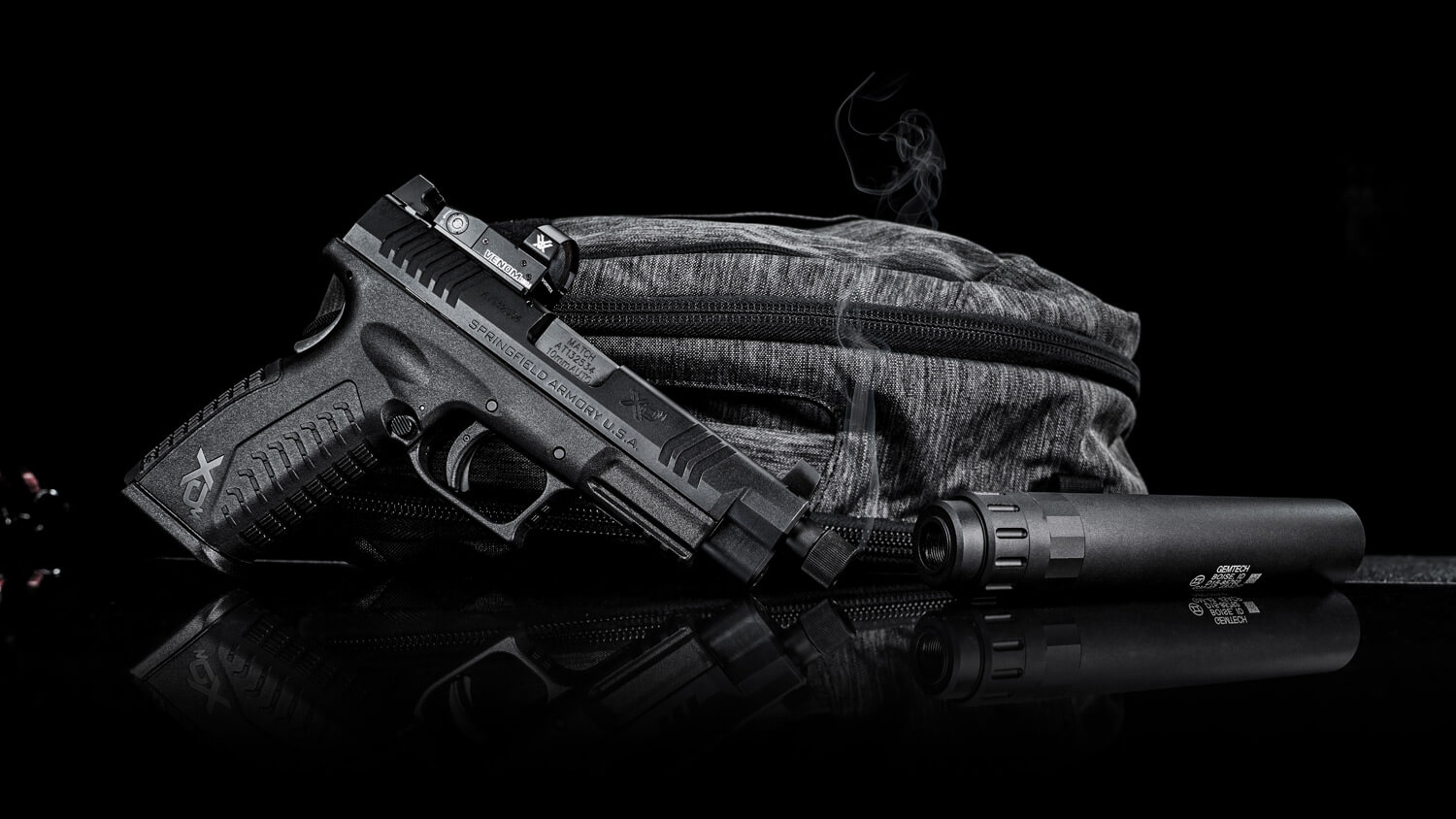
While the exact numbers are up for debate, most experts agree that a single noise exposure of 140 decibels (dB) or more is enough to cause permanent and irreversible hearing damage. You may not know it immediately, but that doesn’t make it less real. Most experts also agree that 130 dB is the pain threshold. That’s not good either.
You’ll note that even when shooting quiet ammunition with a suppressor, that the noise levels are often still in the “pain” range. A few shots probably won’t do too much long-term damage, but if you’re going to be shooting centerfire pistol and rifle calibers a lot, keep some ear protection in place.
Conclusion
The bottom line is simple. Either use proper hearing protection or find alternative ways to protect your ears when shooting. Suppressors come to mind, but that’s not the whole story. Using subsonic ammunition is a big benefit. Using subsonic ammunition with a suppressor is even better.
Join the Discussion
Featured in this article
Continue Reading
Did you enjoy this article?

 109
109




